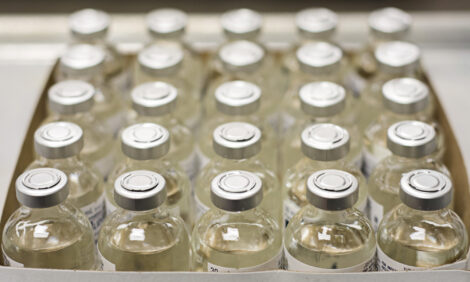



Rwanda to Triple Poultry Production in Five Years
RWANDA - Rwanda seeks to enhance poultry meat production from 30,000 tonnes per year as of 2016, to 100,000 tonnes within the next five years.This was said by Dr Christine Kanyandekwe, the head of Animal Resources Department at Rwanda Agriculture Development Board (RAB).
The move, she said, will be achieved through better poultry management practices, including proper feeding, ensuring security and safety of chickens through effective disease management, and networking among poultry farmers to scale up best practices for enhanced productivity.
Dr Kanyandekwe spoke to The New Times on the sidelines of a two-day-workshop for poultry farmers held in Kigali last week.
She said that the development is in line with the government's Strategic Plan for Agriculture Transformation (PSTA4), which will run from 2018 until 2023.
Dr Kanyandekwe said that there was a need for use of quality and effective drugs, as well as timely and right vaccination procedures to ensure chickens are healthier.
"Factories making poultry feed should avoid anything that can affect farmers’ produce," she said.
"What we want is to help the farmer maximise profits through enhanced productivity."
The chairman of Rwanda Poultry Association, Jean Claude Ruzibiza, said that capacity development of farmers is essential for them to get desired yield, and for the country to be self-reliant in poultry products.
Under the strategy, according to the Ministry of Agriculture and Animal Resources (Minagri), 4 million more chickens will be brought into Rwanda's poultry sector by 2023 to add to the current 7 million chickens being reared currently.
This development will increase egg production by 143 per cent, according to the ministry.
In 2010 the country had 3.5 million chickens which produced about 80 million eggs. By 2016 egg production had increased to 157.7 million eggs amounting to 7,974 tonnes.
Statistics from Rwanda Agriculture Board show that poultry contributed a lot in Rwanda’s overall meat production increased from about 86,000 tonnes in 2015 to about 116,000 tonnes in 2016.
Poultry accounted for 30 per cent, representing over 30,000 tonnes.
Skills gap challenge
In 2013, Duterimbere cooperative from Rwamagana District had 900 chickens it was rearing for meat.
But the cooperative lost 700 of them after fever attack which a veterinary personnel attributed to contaminated feeds, recounts Denise Uwamwezi, one of the cooperative members.
She told The New Times that their chickens died as a result of lack of skills on poultry keeping, and feeding.
"We had no training, or skills in poultry farming, we thought it's only about rearing chickens," she said.
After the incident, the cooperative made up of about 40 members abandoned poultry business in favour of banana farming.
But, Ms Uwamwezi said that because of the interest she had in poultry farming, she later bought 300 layers.
"I decided to take care of chickens like my child, spend time with them and follow up their state, as a mother does to her child," she said.
She said the first month of chicks is critical to their growth.
Dr Kanyandekwe said that ensuring proper feeding, and medicine for chickens is a necessity.
"We want farmers to increase their produce and income, some get loans from banks, we do not want farmers to have their chickens die as it happens to some."
Making feeds affordable
The price of poultry feed varies from Rwf310 to Rwf350 a kilogramme, which farmers say is high compared to their yields.
During harvest season, prices of feeds go down because raw materials such as maize become more affordable, but they go up when it's not harvest season, Dr Kanyandekwe said.
She pointed out that the government is looking for ways to address the issue through facilitating availability of affordable raw materials in all seasons.
In regards to market for poultry products, she said that it is available noting that the Democratic Republic of Congo which had banned poultry imports from Rwanda has lifted the ban.








